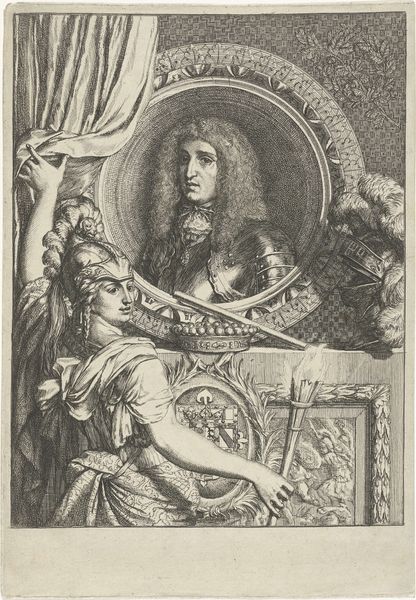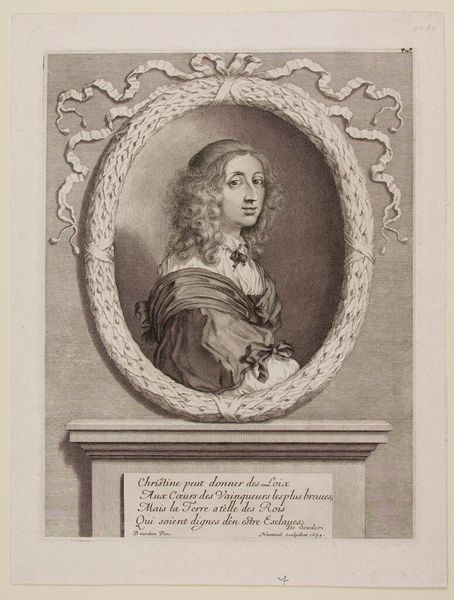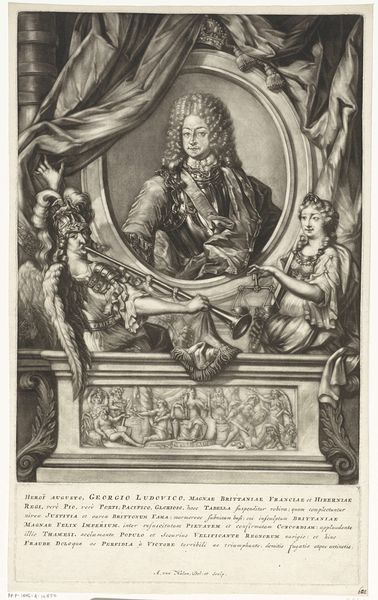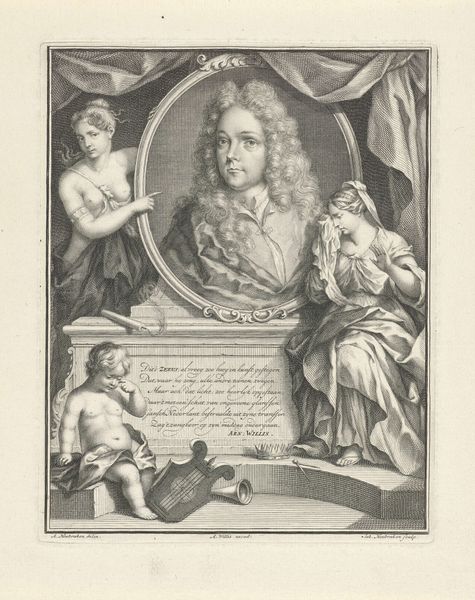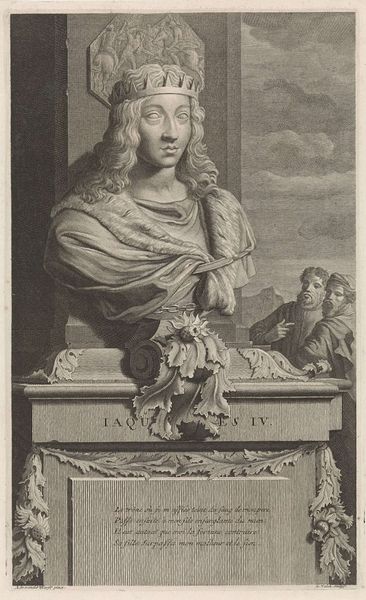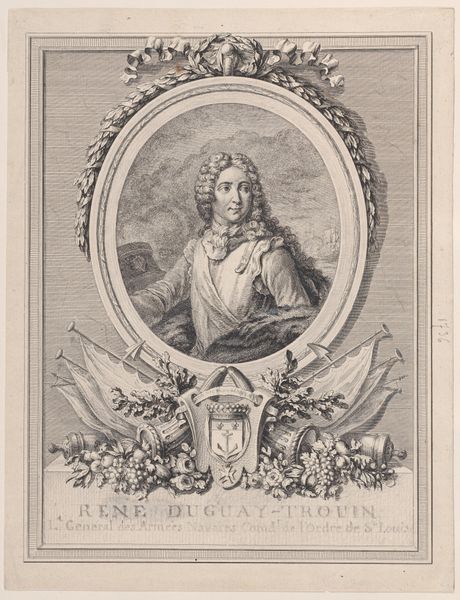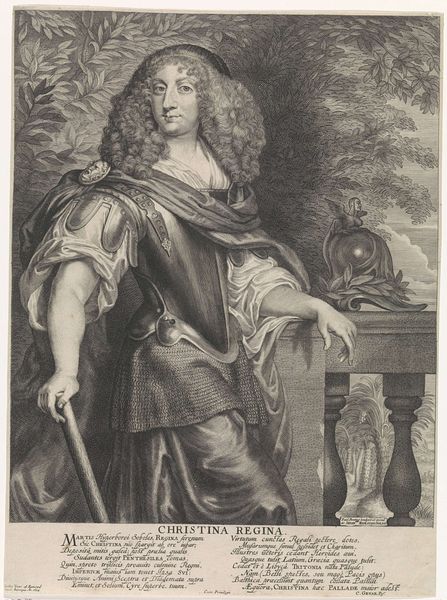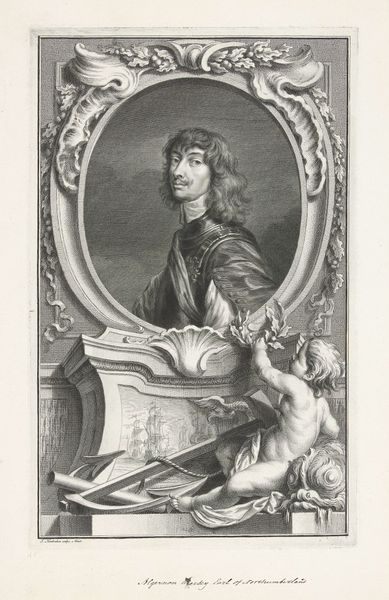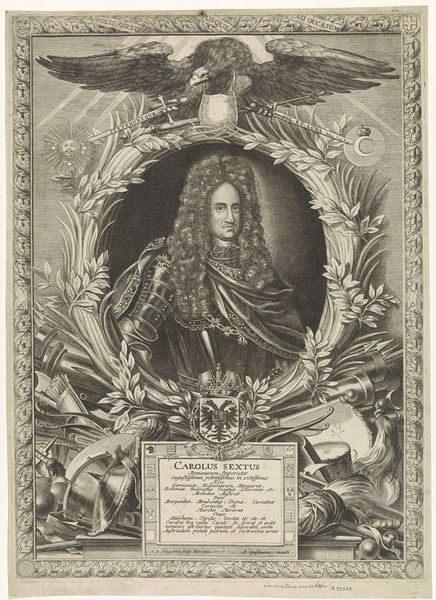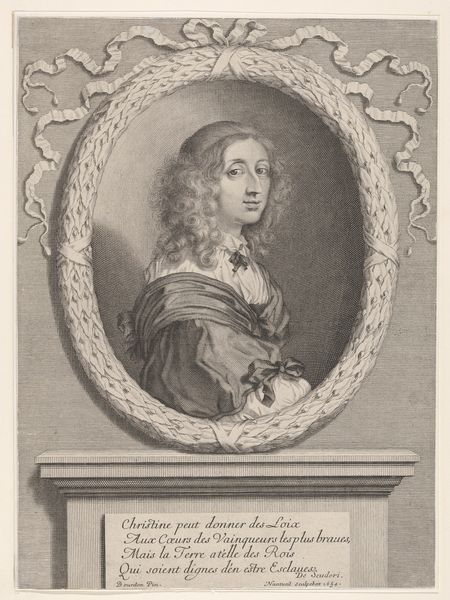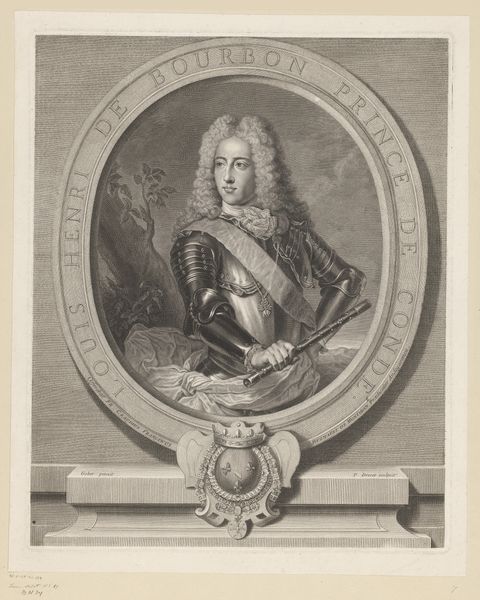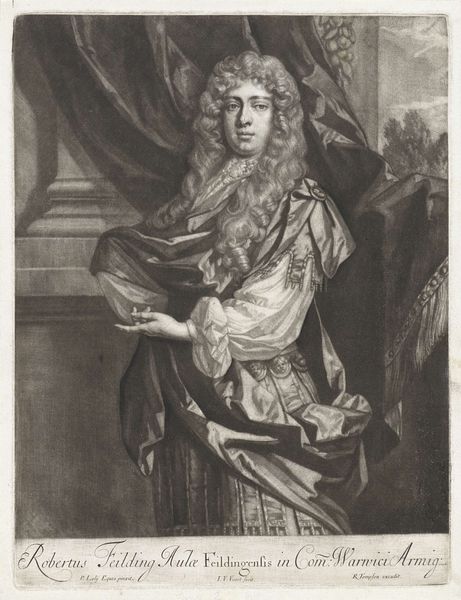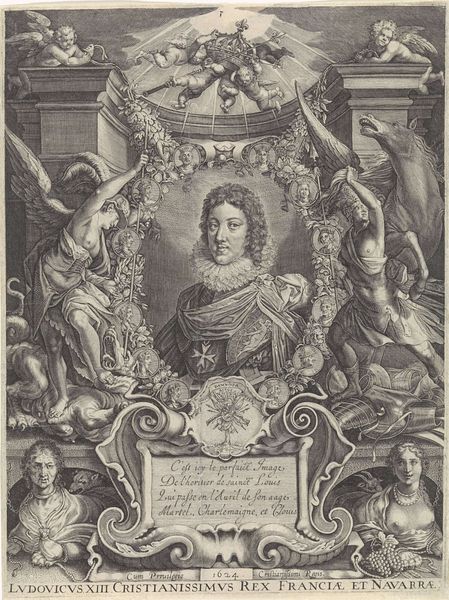
print, engraving
#
portrait
#
baroque
# print
#
old engraving style
#
history-painting
#
engraving
Dimensions: height 280 mm, width 199 mm
Copyright: Rijks Museum: Open Domain
Curator: Standing before us is a striking engraving from 1732, crafted by Matthijs Pool, titled "Allegorical Portrait of the Painter Raphael". It’s currently held here at the Rijksmuseum. Editor: It strikes me immediately as a constructed vision, a projection of fame. The cherubs feel less like playful figures and more like emblems, framing him within an idealized space. Curator: Absolutely. Let's consider Pool’s material process. The precision needed for such detail on the copperplate itself demands skilled labour. We can think about this work not just as art, but as a product of specific technical ability circulating in a particular market. Editor: Agreed. The circular frame practically overflows with symbolic meaning, doesn’t it? The instruments of art hint at creative accomplishment. Note the laurel wreath above Raphael's head, a classical signifier of artistic triumph. This isn’t just Raphael; it's Raphael as artistic hero, molded for posterity. Curator: We might even interpret the print medium as integral to that process of heroic construction. Unlike an oil painting meant for a single wealthy patron, an engraving could circulate much more widely, shaping a broader public understanding of Raphael and, of course, Pool himself as a highly accomplished craftsman. Editor: The expression is particularly telling – a serene, almost detached gaze that suggests inspiration, yet it could also portray accessibility. But the frame itself is fascinating; its flourishes contain smaller scenes that depict moments in Raphael's life, anchoring the symbolic within biographical narratives. Curator: Considering it comes over two centuries after Raphael's death, it prompts us to question the conditions of artistic memorialization at this moment in the Baroque period: How were images produced, and for whom? Who had access to prints and how did this affect Raphael's continuing influence? Editor: Right. The image isn’t just about remembering Raphael, but shaping that memory to reflect the artistic and social values of the time. Seeing how artists envisioned the past offers insights into the ambitions of their own time.
Comments
No comments
Be the first to comment and join the conversation on the ultimate creative platform.
